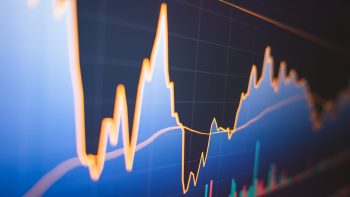A formulaic approach to GDP
TEXT OF STORY
Kai Ryssdal: And it’s good to be able to say this. The economy grew last quarter. It’s been a year since that’s been true. Three-and-a-half percent was the increase in gross domestic product. GDP’s one of those indicators where if you ask someone if they know what it means they’ll say, sure, it’s all the goods and services produced in the economy. But then if you ask ’em what it really means that’s a tougher question. Here with the answer is none other than our senior business correspondent Bob Moon.
BOB MOON: I figured the formula for what the Gross Domestic Product actually measures must be fairly straightforward.
KEN MAYLAND: C + I + G + (X – M). That’s what you see in a textbook.
I know, it sounds complicated. But Ken Mayland of Clearview Economics says it’s actually pretty simple:
C — that’s all we consume, or buy. Plus I — that’s investment by businesses, in everything from software to a new plant. Plus G — all government spending, federal, state and local. Plus X — our net exports, whatever U.S. businesses sold abroad. Minus M — what we imported.
Mayland says the GDP can also be measured at the other end, by totaling all the money Americans took in. Either should provide a sum equal to the GDP number.
MAYLAND: If you take up all the incomes earned in the economy, all the wages plus all the interest and dividend incomes and rents and profits and so on, that should add up to GDP.
Keep in mind, though, a relatively slight shift in spending can look impressive when it comes to GDP growth.
Joel Naroff is chief economist for TD Bank:
JOEL NAROFF: Housing construction added a lot to growth in the summer quarter. If you talk to a developer, they wouldn’t say they’re building an awful lot of homes, but now they’re actually building some, rather than reducing their construction activity. So the change in the level is what mattered, not the actual level itself.
So why does everybody pay so much attention to the GDP? I asked David Smith, a professor of economics at Pepperdine University.
DAVID SMITH: Just like Robinson Caruso, we can only eat what we produce. So it’s a direct measure of our well being as an economy.
Smith says it’s the figure that tells us the most about our standard of living.
I’m Bob Moon for Marketplace.
There’s a lot happening in the world. Through it all, Marketplace is here for you.
You rely on Marketplace to break down the world’s events and tell you how it affects you in a fact-based, approachable way. We rely on your financial support to keep making that possible.
Your donation today powers the independent journalism that you rely on. For just $5/month, you can help sustain Marketplace so we can keep reporting on the things that matter to you.


















